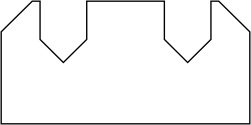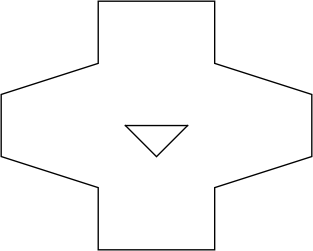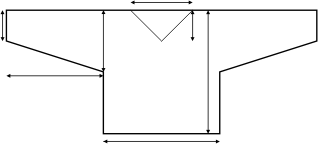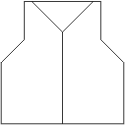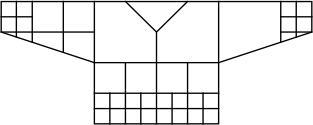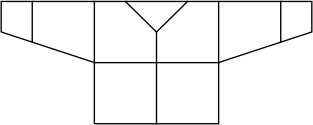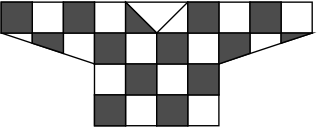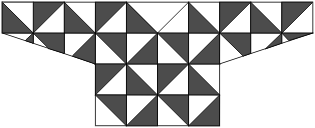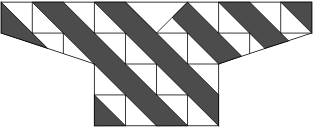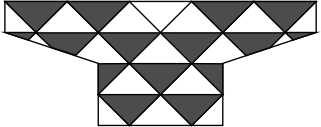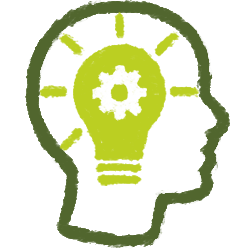Garment shapes
The most important thing is to forget all pre-
conceived ideas of how a garment should be constructed. You do not need a back, front and two sleeves. Any shapes that will wrap around the body can create a garment.
The designs below are all shown on the same basic sweater shape. They are just ideas to start you thinking and can be used on jackets, waistcoats, shawls, etc. as well as on non-clothing items.
The simplest sweater shape is one with no shaping in the sleeves. Such a sweater can be finished off with a simple straight edging, turn-back cuffs or by gathering into a band. Shaped sleeves may require a little more thought, especially when the knitting is not all in the same direction. If in doubt, draw out the sleeve (or any other troublesome pieces) at full size and adjust your shapes to fit to this large template.
Whatever you choose to make, some measurements are needed to begin with.
It is best not to measure yourself. That won’t tell you how much extra you should allow for comfort and ease of movement. Measure something that fits in the way you want the new sweater to fit. If necessary take measurements from different garments to get what you want. The most important measurements are shown on the diagram. You won’t need them all right away.
Note: ‘sweater’ really means any upper body garment.
Opening up the shape in different ways might suggest very different ways of tackling your project.
It may be difficult to believe that the waistcoat outline above is merely the sweater without its sleeves.
Waistcoats and sweaters can use the same methods though the pieces may need to be split in different ways.
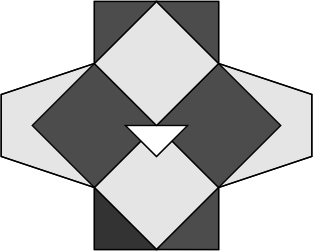
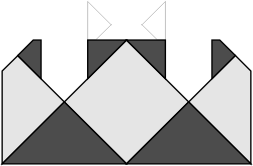
Try working from the centre outwards in all directions
or a completely random assortment of pieces
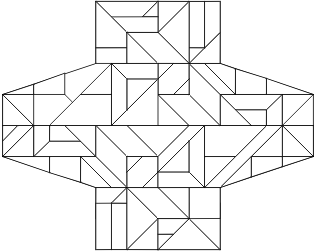
Woolly Thoughts, UK
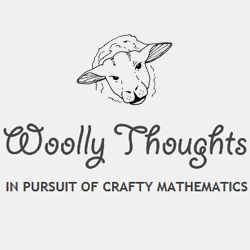
PROFILE
Mathematics through knitting and crochet.
Pat Ashforth and Steve Plummer, described as Mathekniticians.
Textile art is one of the vehicles they used for making Mathematics more accessible, during their teaching careers. They are now retired from formal teaching and their knitting and crochet has expanded beyond their mathematical beginnings.
Woolly Thoughts started, in 1994, as a book about making sweaters, jackets and other garments using mathematical methods.
Main Research Source
Further reading;
Start

